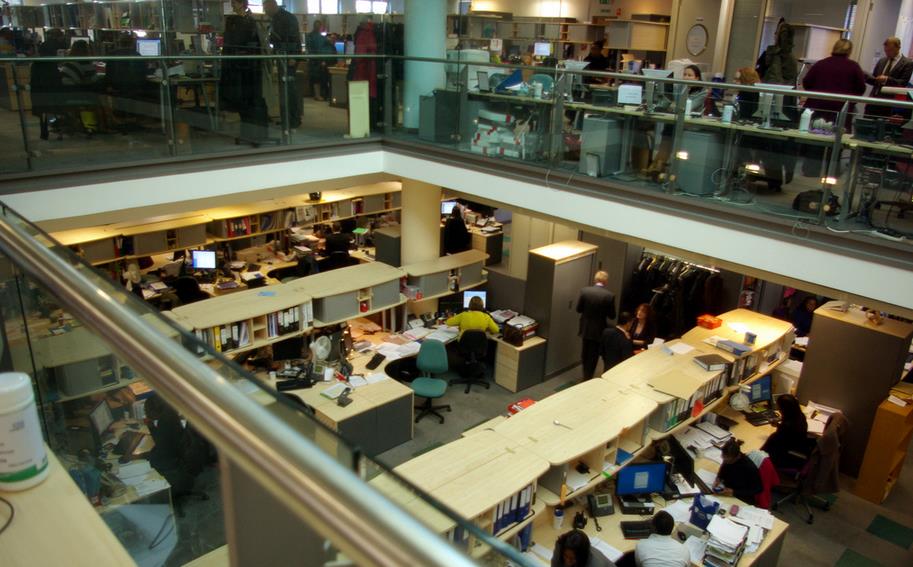
Famously creative businesses like Pixar, Google, Apple and Disney have become well known for promoting a team-building environment. They accomplish this not just by reorganizing their infrastructure to make it more team friendly, but also through the layout of their office in general.
Steve Jobs once famously revolutionized the Pixar offices just by understanding that people in different departments often developed radically different problem solving techniques, especially when they were separated from each other. This discouraged them from sharing ideas and solutions that could have potentially benefitted the whole company. In response to this, Jobs decided to house all of Pixar's team, from the animators, to the storyboard artists, to the writers, in one giant cavernous room. This exposed them to more casual interaction with each other throughout the day, and also gave them a friendlier outlook towards their colleagues. By encouraging inter-office fraternization, ideas were shared from perspectives that each department wouldn't have anticipated otherwise.
Google instigated a similar strategy, building new and exciting ways for different departments to interact with each other. They developed an innovative inter-connected series of hallways, break rooms and ladders that lead to different areas of the building. Aside from inspiring creativity from the team, this eventually got the team to rub elbows with each other more frequently. Studies show that some of the best forms of collaboration occur from brief periods of interaction bound by a common objective. By having an infrastructure that ensures that employees will "bump into one another" from time-to-time, you can ensure that everyone will eventually come to know each other's roles in time. By allowing friendships to occur naturally in a carefully formulated setting like this, you're ensuring that your employees form lasting bonds that will positively impact their teamwork skills.





